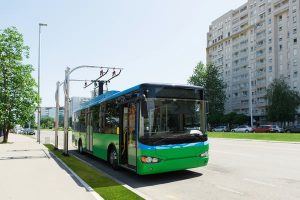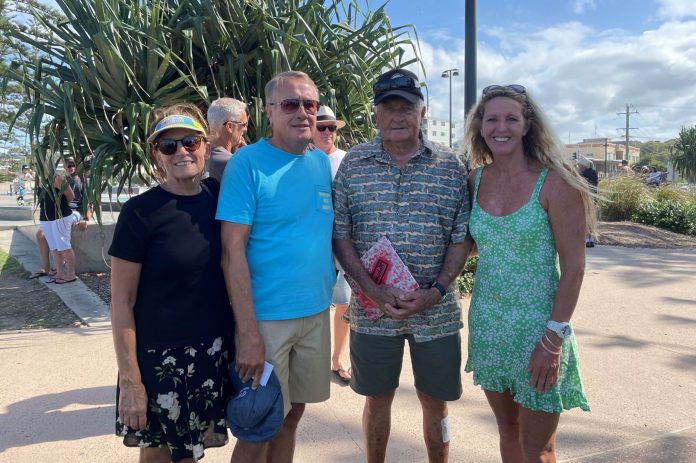The 7000-strong community group, The Beach Matters, believes a smart, cost-effective and swift solution to the Sunshine Coast’s growing traffic woes could be hidden in plain sight.
The group, which has an array of prominent members from former deputy prime minister and treasurer Wayne Swan to developer Mal Pratt, surf legend Hayden Kenny and bestselling author and book producer Rachael Bermingham, has lodged its submission on the future of transport in the region.
This was in response to Sunshine Coast Council’s Options Analysis Paper for a mass transit system, which investigates five options from Maroochydore to Birtinya, including buses, road upgrades, light rail and trams. The public consultation period ends June 22.
In its submission, provided to sunshinecoastnews.com.au, The Beach Matters Group called for a new look at an old resource – the Caboolture to Maroochydore Corridor Study (CAMCOS) land, which has been sitting dormant since the late 1990s.
The State Government completed countless studies and resumed properties for a promised rail link between Beerwah and Sunshine Coast Airport, with stations at Pelican Waters, Caloundra, Aroona, Kawana, Parrearra, Mooloolaba and Maroochydore. This never eventuated and there was no funding for the project.
The Beach Matters Group, however, wants the unused corridor to be included as one of the “major spines’’ of a new environmentally friendly electric, hydro or solar bus network.

It wants a broader bus network to “connect ALL our communities and ease congestion in all of our towns, not just along the coastal corridor”.
The group says putting more infrastructure, such as light rail, and more people along the Nicklin Way/Brisbane Rd/Alex stretch doesn’t solve the issues.
“Introducing the CAMCOS is clever. State Government has already resumed properties and it’s been sitting there idle,’’ the submission says.
“If we use that route to get people moving between Caloundra to the Maroochydore CBD via Kawana Way, then we can disperse destination and thoroughfare traffic. There is less disruption on the community, businesses and traffic along the coast corridor and we’re not adding even more weight to that one route, we’re distributing it and giving residents another faster alternative to get between Caloundra and Maroochydore.
Do you have an opinion to share? Submit a Letter to the Editor with your name and suburb at Sunshine Coast News via: news@sunshinecoastnews.com.au
“Internally within the Sunshine Coast we need two main routes – destinational traffic along the coastal corridor (Nicklin Way/Brisbane Road/Alex Parade) for those specifically going to these places, and thoroughfare traffic along the western urban corridor of the CAMCOS via Kawana Way into Mountain Creek/CBD for those commuting between Caloundra, the hospital, and the Maroochy CBD.
“The CAMCOS line would have limited stops to ensure our preferred transport option being enviro buses could deliver commuters quickly from Caloundra to Maroochydore and eventually to the airport as well.’’
Free school/university travel “to inspire and encourage us to grow up with a much better public transport mindset and relationship,” is also called for in the group’s proposal.
“We need to begin changing the way we think about public transport at grassroots level. Having free school transport will reduce congestion around every school in the region and the angst that every parent feels trying to get to and from school or find a car park.”
Help keep independent and fair Sunshine Coast news coming by subscribing to our free daily news feed. All it requires is your name and email. See SUBSCRIBE at the top of this article
Colour-coded smaller enviro buses running from two Park ’n’ Go facilities on the CAMCOS at Caloundra and the Maroochy CBD to shopping centres, environmental areas like Mount Coolum, the hinterland and the beach are also advised.
“The beach is our greatest economic drawcard, but we don’t make it easy on visitors coming to the area to get to it and enjoy it.”
President of The Beach Matters, Rachael Bermingham, said having a facility visitors could park their car at for the day and take a free hop-on hop-off beach bus that stopped at each patrolled beach from Mooloolaba Spit to Cotton Tree would not only help residents and visitors get to the beach and swim safely, it would reduce cars in these areas.

“We would like to see enviro buses introduced — electric/hydro/solar options are fabulous for our environment, quieter, flexible — they go where there is demand, and merge well with the character of the Sunshine Coast,’’ Ms Bermingham (pictured) said.
“An enviro bus network can grow with us and help ease congestion in all regions, not just a 13km stretch. It would not dominate or damage our landscape like light rail would, and can move into the future, adapting to autonomous/on call/Uber-style options, and can be rolled out faster and cost less than light rail with minimal impact on community and businesses.’’
The Beach Matters Group’s option is not among the council’s options in the survey, however, it says there is widespread interest and approval from the community and groups, along with developers, businesses, beachgoers, high profile and political heavyweights.
The Sunshine Coast Council’s 300-plus page Options Analysis Paper details the “problems and solutions” to future traffic on the Coast as well as scenarios for higher-density development along the transport corridor.
It highlights the need for a mass transit system to get people out of cars, with the Sunshine Coast having the second-highest rate of private car ownership per capita of any local government area in Australia (second to Perth, according to the 2016 Census).
The analysis includes nine options that are being put to the public but shortlists five key mass transit transport solutions — ranging in price from $429 million to $1.553 billion — that have been analysed for their pros, cons and economics.
Council says it is undertaking the business case process to prove to the State and Commonwealth Governments that this is a project worth investing in.
Much of the cost of delivering the mass transit system would be funded by the State and Commonwealth Governments and the cost of operating the system would be funded by the State Government.
Subject to council’s agreement, the finalised report will be sent to the State Government for consideration and further assessment as the basis for the next phase – the Detailed Business Case.
Deputy Mayor and Transport Portfolio Councillor Rick Baberowski thanked the community for the interest they had shown so far.
“For those who haven’t shared their thoughts, there is still time,” Cr Baberowski said.
“Community feedback received via our council survey will help to refine the mass transit options that are most suited to our local area and Sunshine Coast character.
“The online survey provides an important opportunity to really ask great questions about current views on growth, transport preferences and how that might change in the future.
“At this stage, it’s important that all transport types are on the table, which is why we are asking for your feedback on all options.”
Visit council’s website for information about the mass transit options, engagement activities and to have your say by 22 June 2021.
The five key mass transit options include:
- A high-quality bus corridor ($429 million), the cheapest of the options, which would utilise standard buses with the capacity for 110 people in a bus lane.
- Bus rapid transit system ($1.313 billion), similar to Brisbane’s Metro network with battery-powered buses carrying 140 passengers and collecting passengers from dedicated platforms. Buses could be flash charged at stations and deep-charged overnight at depots.
- Trackless trams ($1.322 billion) would be similar to light rail but with rubber tyres. The battery-powered trams could carry 200 passengers but are only currently being produced by one Chinese company. The rubber-tyre trams could in the future be autonomously guided. The best-known trackless tram service is operating in Yibin, Sichuan Province in China.
- Light rail with wires ($1.553 billion) is similar to systems in use in cities like the Gold Coast and Canberra, with the capacity for 300 passengers. This is the highest in cost of the options and the largest infrastructure investment. It would include 14 light rail vehicles, similar to the Gold Coast with a travel time of 30 minutes.
- Wireless light rail ($1.528 billion) is similar to light rail but with onboard battery storage and charging stations so as to negate the need for overhead wires. The batteries can be flash charged on the run at stations and deep charged overnight at depots. Hydrogen battery technology is being tested overseas. This option would counter the public’s concern about the visual amenity of wires.





